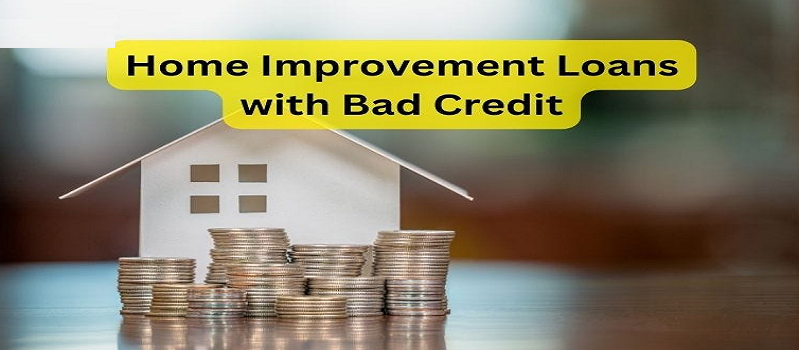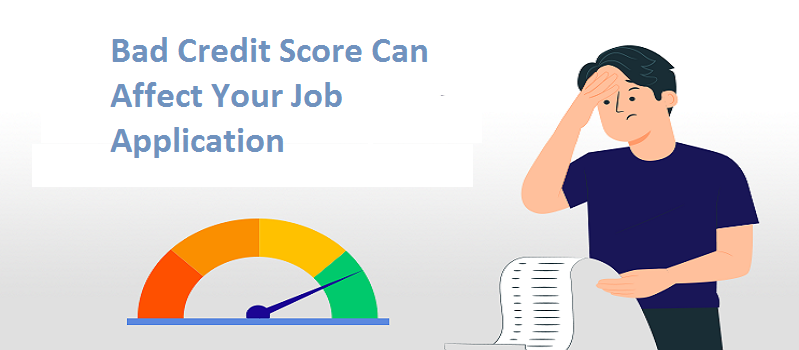Having spent years of life in a house, a sense of freshness fades away. Wall peel-offs, doors cracking noise when swinging back and forth on rusty hinges, patches of seepage, cracks and tiny holes in doorframes, thick sticky grime ingrained in cabinet handles, and many other issues that eventually it seems like you are living in a ramshackle building.
Renovation is the solution to revive the lost spirit of the house, but it eats up a lot of money. Despite savings, you may need to take out a home improvement loan. As these loans are not so small, it can be challenging to get the nod when you have a poor credit score.
A couple of lenders will straightaway refuse you lending money when your credit score is abysmal, but there is still a possibility to get home improvement loans with bad credit.
The impact of a poor credit score on your home improvement loan
Before you wise up to the options available to you, you should know how a poor credit report will have an impact on your borrowing capacity.
There could be several reasons for a poor credit score, but once your credit points are below average, it points out one thing only: you are a riskier borrower. This may influence the decision of your lender on terms they could offer you. A bad credit score does not always deter you from qualifying for a loan, but the deal you are offered may not be that attractive. The reason is apparent that lenders want to lower their risk in case you refuse or fail to adhere to payments.
Even if you can qualify for a home improvement loan, it is worth considering whether it is worthwhile. For instance, check whether the kind of renovation you want to take up can add value to your house.
What do you need to qualify for a home improvement loan with bad credit?
Ideally, except if it is urgent, you would want to wait before taking out a loan to refurbish your house, as this will give you enough time to do up your credit score. If you cannot wait, you will need to meet the following conditions:
1. Put down collateral
A home improvement loan is an unsecured loan provided the borrowing sum is not too large, and it depends on the policies of lenders at what sum they put a cap on, beyond which it becomes a secured loan. Since your repaying capacity is already in question, a lender might not ask you to put down collateral even if you do not borrow beyond the capped limit. The size of the loan will be small if you tend to qualify for the loan without putting down security. The collateral will be your house, meaning if you fail to repay the debt, you will end up losing your house.
As you put down your house as collateral, this minimises the risk of the lender, and therefore, they will likely approve you a higher sum. Compared to short-term loans, the sum will be larger, and hence, the payment period will be longer. The size of the payment term will depend on your financial circumstances. If your financial situation is strong, you can easily manage larger payments, but when your monthly instalments are small, you will be tied to the debt for a more extended period. In other words, you will be paying interest for a longer period.
2. Arrange a guarantor
A lender may ask you to arrange a guarantor as well. This is particularly applicable when your equity in the home is not too high. A guarantor will be a third person who can be anyone, including your spouse or any other family member, with a good credit score. This lowers the risk of the lender as the guarantor will be responsible for clearing the debt when the borrower fails to agree to the payment terms and conditions.
It is vital to note that guarantor loans are not secured loans. Your house will not serve as collateral. As you arrange a guarantor, you will qualify for lower interest rates. Before taking out a home improvement loan with a guarantor, make sure about your repaying capacity. Your defaults will affect the credit report of the guarantor as well.
3. Better alternatives that you should consider
If you need loans in Ireland to do up your house and your credit rating is bad, you should consider the following alternatives:
- You should ask your mortgage lender if they can loan you more on your existing mortgage. The interest rates will be different to that of your mortgage, but they will still be lower. You will get further lower rates if you carry out energy-efficient renovation. Bear in mind that your lender will run credit checks and affordability checks. Advance is not an option if your mortgage is already in arrears.
- A remortgage is also an option. Remortgaging allows you to pay off your current mortgage as your fixed interest-rate period comes to an end and lets you borrow more than you had with your previous mortgage. The excess sum could be utilised to revamp your house. If you did not make any payments during the fixed period deal, you would get lower interest rates, as your credit score would have improved as well.
- If you do not need a large sum, you can use your credit card. This is helpful for small renovation projects, but before using this option, know how your credit card works.
To wrap up
You can take out a home improvement loan with bad credit, but your lender might ask you to put down collateral or arrange a guarantor. This option could be expensive because the risk cannot be offset through any of the ways.
Consider other alternatives like seeking advance from your mortgage lender and remortgage. These options will also require a credit check. Therefore, the fact of the matter is that you will need a good credit score regardless of the loan you apply for refurbishment of your house.

Caleb works as a senior content writer at Financealoan for the past 3 years. He is a writing enthusiast and invests a good time in exploring and writing about financial trends. His keenness in exploring a topic to create a research-based piece is simply unmatched. He believes in including a texture of authenticity with real-time examples and facts.
Caleb’s blogs and articles reveal deep-seated knowledge and expertise. His educational qualification forms the base of his excellent command over the industry and Jargon. He is a postgraduate in Finance and is currently involved in exploring the world of the stock market.






